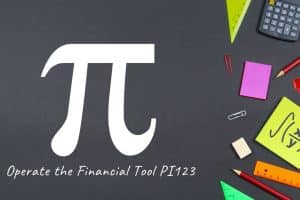Retirement funds are a big deal. Especially in the United States, where people have to plan for retirement from their earliest days of employment. Retirement funds are an important piece of any financial portfolio, and it’s important that you understand what your options are before making decisions about how much to contribute or which account type is best for you. This article will go over the different types of retirement accounts available so that you can make informed decisions about what’s best for your future needs.
401(k)
A 401(k) is a retirement account offered by employers as an employee benefit. If you’re an employee, you need to learn how a 401k works and be updated. Employees can contribute pre-tax dollars to their 401(k), which lowers their taxable income for the year. Employers often match a certain percentage of employee contributions, which is an added bonus. The money in a 401(k) account grows tax-free, and employees can generally withdraw the money without penalty once they reach 59.5 years old.
The main downside to a 401(k) account is that you’re limited in how much you can contribute each year. For 2019, the maximum contribution is $19,000. If you want to save more for retirement, you may need to look into other options like an IRA or a Roth IRA.
Individual Retirement Account (IRA)
An IRA is a personal savings account that allows people to save money for retirement. There are two main types of IRAs: Traditional and Roth. With a Traditional IRA, you can deduct your contributions from your taxable income, which can lower your tax bill come April 15th. However, you will have to pay taxes on the money in the IRA when you withdraw it. With a Roth IRA, there is no upfront tax deduction – you contribute to this type of account with after-tax dollars which means come April 15th, you won’t get to deduct your contributions from your taxable income. However, unlike the Traditional IRA, all the money in the Roth IRA – including the earnings – will be tax-free when you withdraw it.
There are other differences between Traditional and Roth IRAs, but those are the most important ones to know. For example, with a Traditional IRA, you have to start withdrawing money at age 70.5 regardless of whether or not you need it, while there are no mandatory withdrawals from a Roth IRA at any age. Should you decide to open a Traditional or Roth IRA, you will also have to choose between opening them through an online brokerage like Ally Invest or through a bank. Whichever option you choose, be sure to do your research and find the best deals available.
Pension Plan
A pension plan is a great option for employees who work for companies that offer them. With a pension plan, the company you work for continues to contribute to your account even while you’re working and earning an income. While it differs from retirement accounts like Roth IRAs and 401(k)s in that the money does not belong to you until you reach retirement age, it’s a hassle-free option that doesn’t require you to do anything once you’re enrolled.
Savings Incentive Match Plans for Employees (SIMPLE IRA)
A SIMPLE IRA is a retirement account that is similar to a 401(k). Employees can contribute pre-tax dollars to their SIMPLE IRA, and employers often match a certain percentage of employee contributions. The money in a SIMPLE IRA account grows tax-free, and employees can generally withdraw the money without penalty once they reach 59.5 years old.
The main difference between a SIMPLE IRA and a 401(k) is that employees are limited in how much they can contribute to a SIMPLE IRA each year. The contribution limit for 2019 is $13,000. If you want to save more for retirement, you may need to look into other options like an IRA, a Roth IRA, or a traditional 401(k).
Employee Stock Ownership Plan (ESOP)
An ESOP is a retirement plan that might be offered by the company you work for. It gives employees ownership in their companies through stock purchases. While it differs from other retirement accounts because you don’t have complete control over the money, it does give you some say in how much of your company is owned by employees.
ESOPs are designed to encourage employees to put forth their best work and keep them engaged at work. Employees who participate in an ESOP are more likely to feel less stress regarding their employment, meaning they are more likely to be productive and stay with the company for a longer period of time.
Nondeductible IRA
A nondeductible IRA is a special type of IRA that is not subject to the same rules as Traditional and Roth IRAs. With a nondeductible IRA, you are still able to contribute pre-tax dollars, but those dollars will not lower your taxable income for the year. The money in a nondeductible IRA account grows tax-free, and employees can generally withdraw the money without penalty once they reach 59.5 years old.
The main downside to a nondeductible IRA is that you are limited in how much you can contribute each year. The money in a nondeductible IRA account grows tax-deferred, and you are required to start taking distributions from the account at age 70.5.

403(b)
A 403(b) is a retirement account that is similar to a 401(k). Employees can contribute pre-tax dollars to their 403(b), and employers often match a certain percentage of employee contributions. The money in a 403(b) account grows tax-deferred, and employees can generally withdraw the money without penalty once they reach 59.5 years old.
The main difference between a 403(b) and a 401(k) is that employees are limited in how much they can contribute to a 403(b) each year. The contribution limit for 2019 is $19,000. If you want to save more for retirement, you may need to look into other options like a 401(k), a SIMPLE IRA, or a Traditional IRA.
There are many different types of retirement accounts available to people, but there is no one-size-fits-all account. Some may offer tax advantages while others might be better for the self-employed or business owners. It’s important to decide which type will work best with your individual needs before investing in a new retirement account. We hope this blog post has helped you narrow down what kind of account would be right for you.














Add Comment